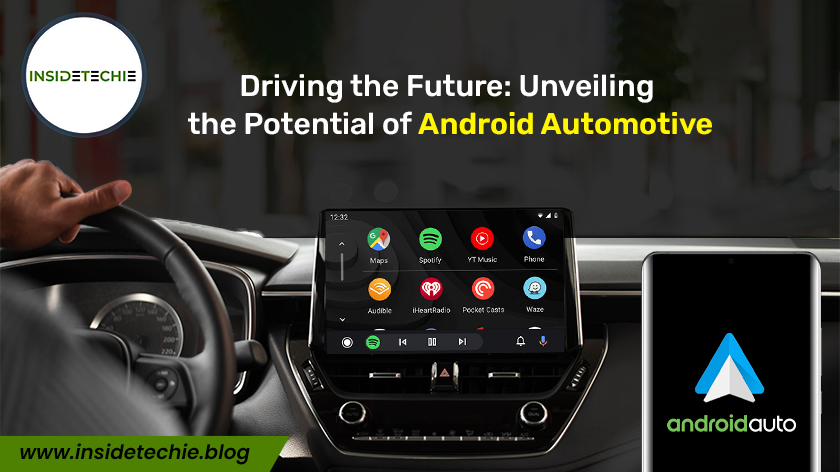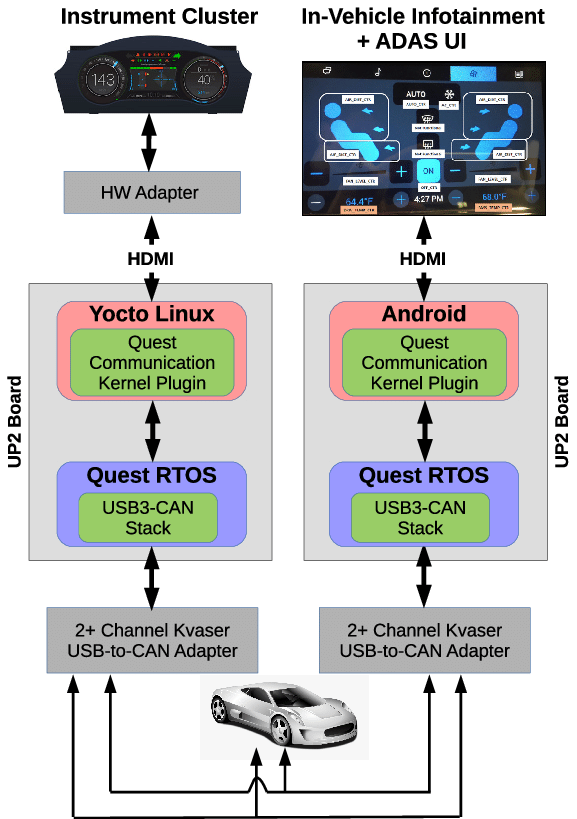A Glimpse into the Future of Driving
Introduction of Android automotive technology:
In the era of rapid technological advancement, our vehicles are not immune to the wave of innovation sweeping across industries. Enter Android Automotive, a groundbreaking platform that is transforming the in-car experience and driving the future of automotive technology. In this blog post, we’ll delve into the exciting realm of Android Automotive, exploring its features, implications, and the future it promises for connected and intelligent vehicles.
The Rise of Android Automotive:
Android Automotive is not just an operating system; it’s a comprehensive platform designed to seamlessly integrate with our vehicles, bringing the power of Android to the dashboard. Google’s foray into automotive technology is marked by its commitment to creating a connected, intuitive, and smart driving experience.
Features that Redefine In-Car Experience:
- Google Assistant Integration: Imagine having a personal assistant right in your car. With Google Assistant integration, Android Automotive allows drivers to control various functions, from adjusting the temperature to finding the nearest gas station, all through voice commands.
- Media and Entertainment: Android Automotive transforms the dashboard into an entertainment hub. Enjoy your favorite music, podcasts, and streaming services with ease, all while staying focused on the road.
- Navigation Reinvented: Say goodbye to traditional navigation systems. Android Automotive leverages Google Maps, providing real-time traffic updates, intelligent route suggestions, and a seamless navigation experience.
- App Ecosystem: The platform supports a diverse range of apps, making your car a personalized and versatile space. From productivity tools to lifestyle apps, Android Automotive extends the functionality of your vehicle beyond the traditional.
- Over-the-Air Updates: Keep your car’s software up-to-date effortlessly. Android Automotive facilitates over-the-air updates, ensuring that your vehicle is always equipped with the latest features, security patches, and improvements.
Advantages of Android Automotive:
- Seamless Connectivity: Android Automotive provides seamless integration with smartphones, creating a connected driving experience. Users can effortlessly access apps, music, and navigation services, enhancing convenience and entertainment during journeys.
- User-Friendly Interface: Leveraging the intuitive design of the Android platform, Android Automotive offers a user-friendly interface. Drivers can interact with the infotainment system effortlessly, reducing distractions and promoting safer driving.
- Customization Options: Android Automotive allows for a high degree of customization, enabling users to personalize their in-car experience. From personalized layouts to preferred apps, this flexibility caters to diverse user preferences.
- Voice Recognition and Google Assistant: Advanced voice recognition and integration with Google Assistant enhance hands-free operation. Drivers can perform tasks such as making calls and controlling functions using voice commands, contributing to a safer driving environment.
- Regular Software Updates: Android Automotive benefits from Google’s frequent software updates, ensuring users have access to the latest features, security patches, and improvements. This helps in keeping the driving experience current and secure.
Disadvantages of Android Automotive:
- Connectivity Dependency: Android Automotive relies heavily on internet connectivity for features like real-time navigation and app updates. In areas with poor network coverage, users may face limitations, affecting the functionality of certain features.
- Security Risks: The integration of connected technology raises security concerns. Potential vulnerabilities could be exploited by hackers, posing risks to both the safety of the vehicle and the privacy of user data.
- App Compatibility Challenges: Some Android apps may not be optimized for in-car use, leading to compatibility issues. Developers need to adapt their applications to ensure a seamless and safe experience within the automotive context.
Conclusion:
Android Automotive represents a significant leap in the evolution of in-car technology, offering a host of advantages that enhance the driving experience. The seamless connectivity, user-friendly interface, and customization options contribute to a more enjoyable and personalized journey for users. However, challenges such as connectivity dependency and security risks underscore the importance of addressing these issues to ensure a safe and reliable driving environment. As the automotive industry continues to embrace Android Automotive, collaborative efforts between automakers and developers will be crucial in overcoming these challenges. With ongoing advancements and a commitment to addressing limitations, Android Automotive holds the potential to redefine the future of in-car technology, making driving not just a means of transportation but a connected and personalized experience.
As the automotive industry continues to evolve, Android Automotive stands as a testament to the endless possibilities that arise when innovation meets the open road. Buckle up; the future of driving is here.
 :
https://insidetechie.blog/
:
https://insidetechie.blog/



